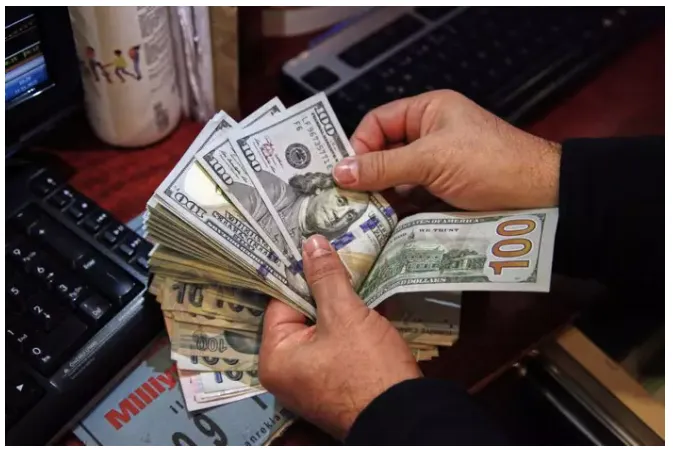简体中文
繁體中文
English
Pусский
日本語
ภาษาไทย
Tiếng Việt
Bahasa Indonesia
Español
हिन्दी
Filippiiniläinen
Français
Deutsch
Português
Türkçe
한국어
العربية
Market nerves prop up safe-haven dollar, yen
Abstract:The yen held most of its overnight gains on Friday, after falling U.S. yields and market jitters propped up the Japanese currency while another Wall Street selloff drove flight-so-safety bid to dollar, which remains near 20-year high peaks.

The yen was at 129.14 per dollar on Friday morning, softening on the day after it had reached a two-week peak of 127.5 overnight.
Thursdays 1.2% decline for dollar/yen was its biggest daily percentage fall this year. The euro/yen cross declined 2.5%, its biggest daily percentage fall since 2016 as the common currency a victim of the “risk off” mood.
“The yen is perhaps the most obvious signal of a shift from a world where yields were dominant and risk was resilient (yen negative), to a world this week where the dominant force is sour risk appetite driving yields lower (yen positive),” said Alan Ruskin, macro strategist at Deutsche Bank in a note.
The benchmark U.S. 10-year yield was 2.8822% having declined each session this week from Mondays high of 3.203%.
Rising U.S. yields at a time when the Bank of Japan was intervening to keep Japanese benchmark yields pinned down caused the yen to soften this year.
Investors are continuing to move towards safe-haven assets fearing central bank rate hikes to constrain inflation could hit global economic growth while MSCIs gauge of stocks around the world fell to its lowest level overnight since November 2020.
After the Fed raised its benchmark overnight interest rate by 50 basis points last week, the largest hike in 22 years, investors are assessing how aggressive the central bank policy path will be.
Expectations are completely priced in for another hike of at least 50 basis points at the central bank‘s June meeting, according to CME’s FedWatch Tool.
The euro was at $1.038 approaching its 2017 low of $1.034. A break past that would be its lowest in nearly 20 years.
The weak euro kept the dollar index at 104.75, just off its overnight 20-year peak of 104.92.
Sterling hunkered down at $1.2206, and the Aussie dollar was also bruised at $0.6887.
Crypto markets were steadier on Friday after a week of turmoil, as the risk-off mood combined with the spectacular collapse of stable coin TerraUSD.
The sell-off has taken the combined market value of all cryptocurrencies to $1.2 trillion, less than half of where it was last November, based on data from CoinMarketCap, and sent bitcoin to as low as $25,401.05 on Thursday, its lowest level since Dec. 28, 2020.
But things were calmer in early trading on Friday with bitcoin up 1.73% trading around $29,400.

Disclaimer:
The views in this article only represent the author's personal views, and do not constitute investment advice on this platform. This platform does not guarantee the accuracy, completeness and timeliness of the information in the article, and will not be liable for any loss caused by the use of or reliance on the information in the article.
Read more

5 Risks associated with Grand Capital
You can avoid fraud, crypto scams, and similar traps simply by staying informed. If you regularly follow forex news, there’s a lower chance that you’ll fall victim to such scams. Being aware is the only way to stay safe. That’s why you also need to know about the Grand Capital broker and why it should avoided.

Exposed: Ibell Markets - A Scam Broker That Does Not Allow Withdrawals
Ibell Markets adds to the infamous list of scam brokers who think about acquiring customers and their investments. But what about the withdrawal? Do they allow? Read this to find out.

Avoid Trendify: 5 Red Flags Revealed
Trendify is nothing more than a scam broker. It is one of those forex brokers that acts genuine but is actually full of red flags. Before you invest and fall victim to its investment scam, its better to check out the risks involved with Trendify.

Forex Interbank Rate & How It Influences Your Trading
A forex interbank rate is nothing but the wholesale currency exchange rate that banks and other major financial institutions use to trade currencies among themselves. Read more about it.
WikiFX Broker
Latest News
FCA clarifies expectations on bullying, harassment and violence to deepen trust in financial service
Asia-Pacific markets mixed after Trump shifts goalposts on tariffs again
XS.com Expands Global Reach with Landmark Kuwait Launch
European markets set to open mixed amid fresh U.S. tariff threats
Top Wall Street analysts are pounding the table on these 3 stocks
Stock futures fall after Trump team says tariffs will go into effect on Aug. 1: Live updates
10 Unlicensed Brokers Exposed – Check Now to Stay Safe!
S&P 500 futures fall slightly as Trump threatens new tariffs, Tesla shares drop: Live updates
Stocks are lower despite Bessent saying several trade announcements are ahead: Live updates
Exposed: Ibell Markets - A Scam Broker That Does Not Allow Withdrawals
Currency Calculator


